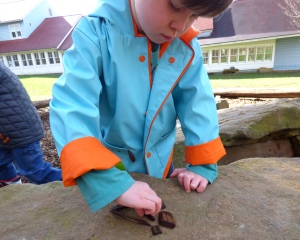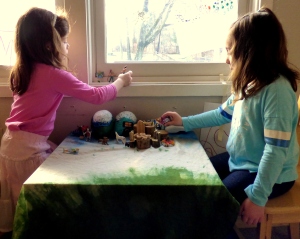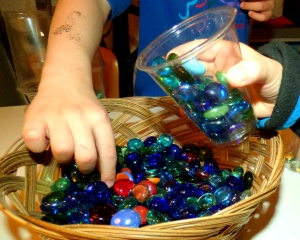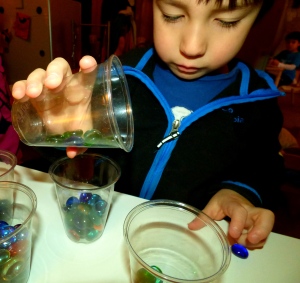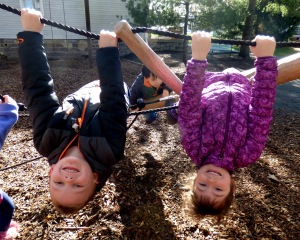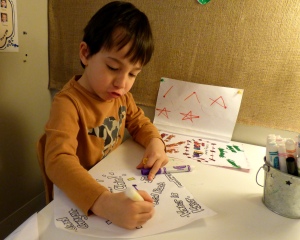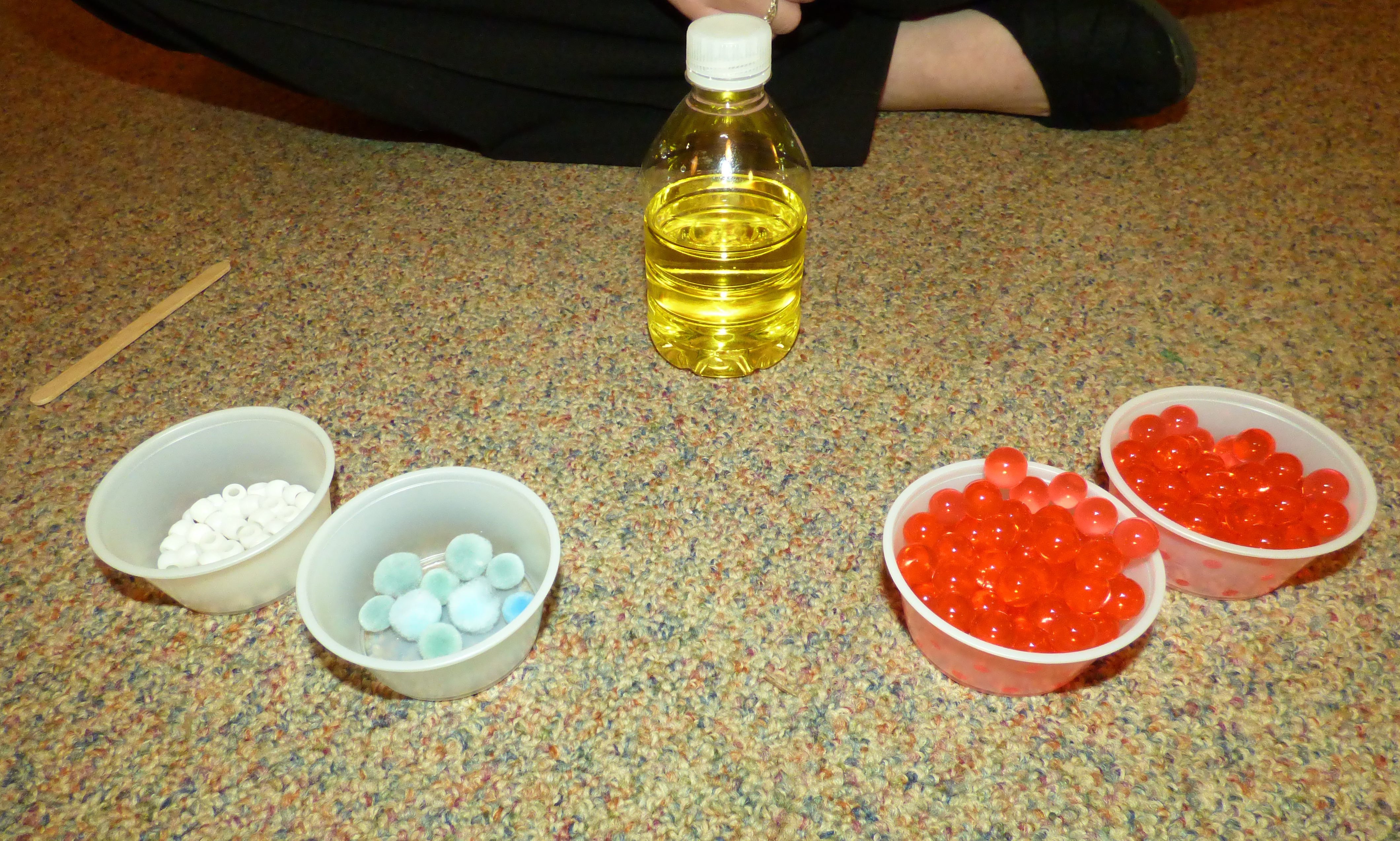In the past week, the students have been playing a game during center time called “Letter Builders” where they work with various wooden shapes to build a given letter. At the beginning of the game, the students are given a card with a letter displayed on it and they are asked to figure out which pieces they will need to make their letter. They then take the wooden pieces and place them right on top of the letter card. In most cases, the students exclaim how easy the task is and that they are ready for more of a challenge.

Once the students are comfortable with their abilities to manipulate the shapes, the letter card is then placed on a stand that sits in the middle of the table. The students must now create the letter shape while looking at the letter card from afar rather than directly in front of them. While this seems like it should be an easy task, the children actually must now use their executive functioning skills and working memory to hold the shape of the letter in their minds while searching for the appropriate pieces. Then they must create the shape of the letter in front of them without the help of the card underneath as a guide. The letters that use more straight pieces tend to be the easiest for the students to create, while the letters that use curvy pieces or letter that requires the students to cross the midline prove to be the most challenging. Some of the letters require the students to overlap the pieces, which created an extra challenge for them to tackle.

The last step in the game is when the students must create the letters completely on their own. The letter cards are put away and the student are asked to create the letter completely from memory. This is obviously the most challenging as the students must think about what shapes they will need without an example in front of them to use as a resource. Some students quickly problem solved this issue by looking around the room for the letter they were working on or even looking at a neighbor’s completed letter. The more the students work with the letters and their shapes, the easier the task becomes.

Today, we focused on creating uppercase letters as they are easier to form. Next time we play, the students will be challenged with creating lowercase letters with the wooden shapes. This makes the task slightly more difficult as the students will have to make sure their letter shapes are facing the correct direction. When shifted, even slightly, it can be easy to accidentally create the wrong letter. Letters such as b, d, p, and q look remarkably alike and the students will have to stay focused in order to create the correct letter. We know that our Pre-k Letter Builders will be up for the challenge!
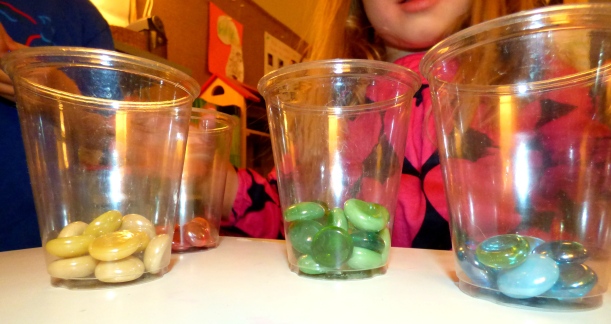 Between the ages of 3-6, children spend large amounts of time honing their fine motor skills. As adults, we take controlling the tiny ballet of movement within our hands and wrists for granted. Children, developing from the trunk outward, have a much better grasp of motions involving their entire arm. This is why many young creators use both a fist grip and large sweeping motions either from their elbow or shoulder. Practice controlling these muscles is the only way provide growth. The funny thing is that children are built to learn this skill. They naturally seek out activities that hone their use of all the fine motor muscles. Below are some of the ways children choose to practice in our class.
Between the ages of 3-6, children spend large amounts of time honing their fine motor skills. As adults, we take controlling the tiny ballet of movement within our hands and wrists for granted. Children, developing from the trunk outward, have a much better grasp of motions involving their entire arm. This is why many young creators use both a fist grip and large sweeping motions either from their elbow or shoulder. Practice controlling these muscles is the only way provide growth. The funny thing is that children are built to learn this skill. They naturally seek out activities that hone their use of all the fine motor muscles. Below are some of the ways children choose to practice in our class.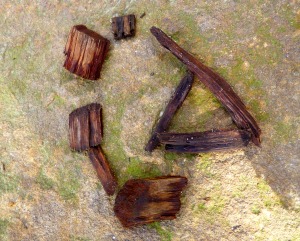 Arranging and creating designs using found objects.
Arranging and creating designs using found objects.
